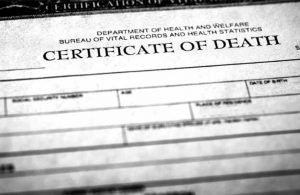A Beneficiary’s Guide to Filing a Life Insurance Claim
 A life insurance policy can be a thoughtful way to provide for loved ones after you die. But what happens if you are the beneficiary of someone’s life insurance policy? Losing someone close to you is a stressful situation.
A life insurance policy can be a thoughtful way to provide for loved ones after you die. But what happens if you are the beneficiary of someone’s life insurance policy? Losing someone close to you is a stressful situation.
Fortunately, however, filing a claim usually is fairly straightforward. Here is what you should do if you want to receive the benefits from a policy. Hopefully, you know where a copy of the policy is located. The life insurance company might alert you, but if not there are several ways to find a copy of the policy if it is not readily available:
• If you have access to login information, check the insurance company’s claims portal.
• Look for a PDF that may have been downloaded onto a hard drive.
• Call life insurance companies that do business in your state, particularly if the policy holder had any other type of policy with that company
• Ask the benefits administrator of the policy holder’s employer if they offer a group life insurance policy.
• Look for premium payment stubs.
• Contact your state’s insurance department as well as its unclaimed property office. This usually can be accessed online.
• In rare cases, the insurance company may have gone out of business since the insured person purchased the policy or the company may have changed its name or merged with another company. In these situations, you’ll have to do some research.
Once you have a copy of the policy, determine whether you’re a primary beneficiary or a secondary beneficiary. If there is more than one primary beneficiary, you will have to split the death benefit. If you or someone else is named a secondary beneficiary then no benefits will be paid unless all the primary beneficiaries are dead or refused to receive the benefit. If the primary beneficiary can’t or won’t accept the life insurance proceeds, the contingent beneficiary must file a claim with the life insurance company.